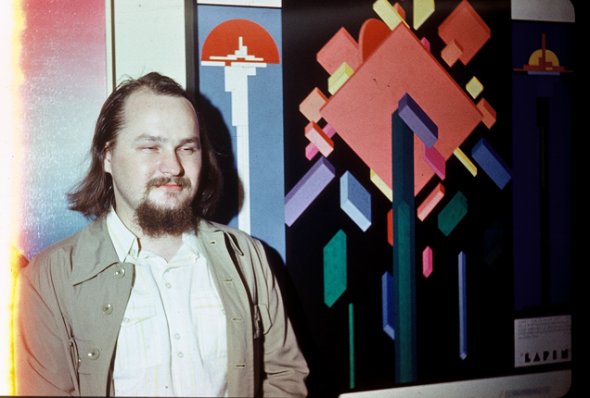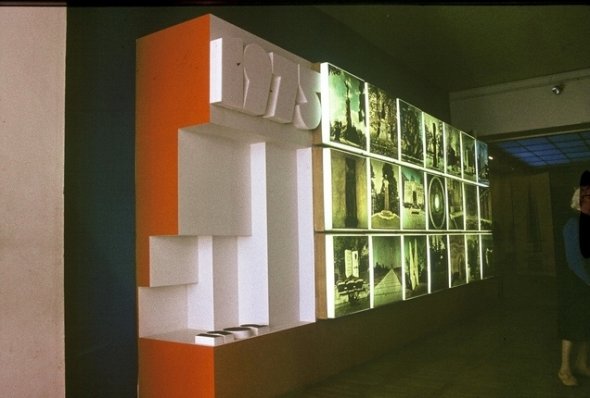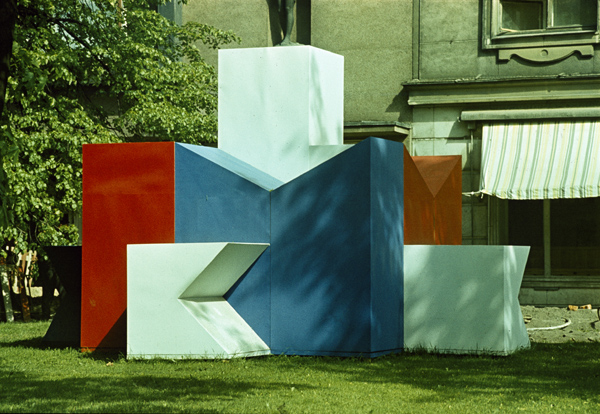Estonian Monumental Art 1902–1975 – a show of historical and experimental works

The main exhibition was a retrospective of twentieth-century Estonian monumental sculpture. In the main hall were photographs of monuments from the Soviet period with a bust of Lenin in the center. In smaller halls were decorative sculpture and some constructivist forms from the 1920s, and in the farthest room from the entrance was the small show of experimental works. The latter featured designs and models by architects, as well as abstract paintings, prints, and kinetic objects, and a separate brochure was provided in addition to the main catalog.
The abstract artwork might be considered as way to camouflage monumental designs—a tactic often ascribed to unofficial art, enabling works to be exhibited that did not conform to official standards. However, this show was different in that it included architects, designers, and artists equally, without differentiation. The goal of this intervention was not merely camouflage, but the transformation of the official genre, to re-shape it into an extensive design of public space.
An anonymous review (actually written by Lapin), published in the local arts magazine Kunst, explained that the new monumental art was moving away from the design of single monuments and towards the organization of total environments. Architecture as well as street lighting systems would be the field for this new art.
The idea for the exhibition was related to discussions on monumentality and monumental art in the Soviet Union and also to the crises that had arisen since the 1960s concerning the new modern industrially constructed city—itself in need of a new kind of monument. Representational monumentality was confronted with a new kind of synthesis based on art, architecture, and new technologies. It was about the creation of new city structures and, as result, a different kind of public space.
Lapin used the exhibition format to make a statement and to open dialogue with official art. His exhibition design used the colors of the French national flag— blue, red, and white—to refer to ideas of freedom, brotherhood, and equality.
Date: 17 May – 28 June 1976
Participants of the experimental section: Villu Jōgeva (1940), Tiit Kaljundi (1946-2008), Vilen Künnapu (1948), Leonhard Lapin (1947), Jüri Okas (1950), Toomas Rein (1940), Sirje Runge (1950), Harry Šein (1947), Aili Vint (1941), Tõnis Vint (1942)
Organizers: The Ministry of Culture, designed and curated by Leonhard Lapin (assisted by art historian Viivi Viilmann)
Location: Tallinn Art Hall



